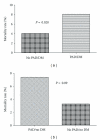Peripheral arterial disease in patients presenting with acute coronary syndrome in six middle eastern countries
- PMID: 22220279
- PMCID: PMC3246760
- DOI: 10.1155/2011/815902
Peripheral arterial disease in patients presenting with acute coronary syndrome in six middle eastern countries
Abstract
To describe prevalence and impact of peripheral arterial disease (PAD) in patients with acute coronary syndrome (ACS), data were collected over 5 months from 6 Middle Eastern countries. Patients were divided into 2 groups (with and without PAD). Out of 6705 consecutive ACS patients, PAD was reported in 177 patients. In comparison to non-PAD, PAD patients were older and more likely to have cardiovascular risk factors. They were more likely to have high Killip class, high GRACE risk score, and non-ST elevation ACS (NSTEACS) at presentation. Thrombolytics, antiplatelet use, and coronary intervention were comparable in both groups. When presented with ST-elevation myocardial infarction (STEMI), patients with PAD had worse outcomes, while in NSTEACS; PAD was associated with higher rate of heart failure in comparison to non-PAD patients. In diabetics, PAD was associated with 2-fold increase in mortality when compared to non-PAD (P = 0.028). After adjustment, PAD was associated with high mortality in STEMI (adjusted OR 2.6; 95% CI 1.23-5.65, P = 0.01). Prevalence of PAD in ACS in the Gulf region is low. Patients with PAD and ACS constitute a high risk group and require more attention. PAD in patients with STEMI is an independent predictor of in-hospital death.
Figures


Similar articles
-
Peripheral Arterial Disease in the Context of Acute Coronary Syndrome: A Comprehensive Analysis of Its Influence on Ejection Fraction Deterioration and the Onset of Acute Heart Failure.J Pers Med. 2024 Feb 26;14(3):251. doi: 10.3390/jpm14030251. J Pers Med. 2024. PMID: 38540993 Free PMC article.
-
Prevalence and impact of cardiovascular risk factors among patients presenting with acute coronary syndrome in the middle East.Clin Cardiol. 2011 Jan;34(1):51-8. doi: 10.1002/clc.20873. Clin Cardiol. 2011. PMID: 21259279 Free PMC article.
-
Characteristics, management and outcomes of patients with acute coronary syndrome and prior coronary artery bypass surgery: findings from the second Gulf Registry of Acute Coronary Events.Interact Cardiovasc Thorac Surg. 2011 Dec;13(6):611-8. doi: 10.1510/icvts.2011.274571. Epub 2011 Sep 13. Interact Cardiovasc Thorac Surg. 2011. PMID: 21920933
-
Trends in management and outcome of patients with non-ST elevation acute coronary syndromes and peripheral arterial disease.Eur J Intern Med. 2019 Jan;59:70-76. doi: 10.1016/j.ejim.2018.08.010. Epub 2018 Aug 25. Eur J Intern Med. 2019. PMID: 30154039
-
API expert consensus document on management of ischemic heart disease.J Assoc Physicians India. 2006 Jun;54:469-80. J Assoc Physicians India. 2006. PMID: 16909697 Review.
Cited by
-
Very Low Frequency of PAD in People with CHD in Six Middle Eastern Countries.Int J Vasc Med. 2012;2012:409057. doi: 10.1155/2012/409057. Epub 2012 Mar 27. Int J Vasc Med. 2012. PMID: 22536508 Free PMC article. No abstract available.
-
Propensity score matching analysis of the impact of Syntax score and Syntax score II on new onset atrial fibrillation development in patients with ST segment elevation myocardial infarction.Ann Noninvasive Electrocardiol. 2018 Mar;23(2):e12504. doi: 10.1111/anec.12504. Epub 2017 Oct 4. Ann Noninvasive Electrocardiol. 2018. PMID: 28975725 Free PMC article.
-
Peripheral Artery Disease as a Risk Factor for Myocardial Infarction.Cureus. 2021 Jun 15;13(6):e15655. doi: 10.7759/cureus.15655. eCollection 2021 Jun. Cureus. 2021. PMID: 34277248 Free PMC article.
-
Prevalence of previously unrecognized peripheral arterial disease in patients undergoing coronary angiography.Medicine (Baltimore). 2018 Jul;97(29):e11519. doi: 10.1097/MD.0000000000011519. Medicine (Baltimore). 2018. PMID: 30024534 Free PMC article.
-
Diastolic versus systolic ankle-brachial pressure index using ultrasound imaging & automated oscillometric measurement in diabetic patients with calcified and non-calcified lower limb arteries.BMC Cardiovasc Disord. 2016 Oct 26;16(1):202. doi: 10.1186/s12872-016-0377-1. BMC Cardiovasc Disord. 2016. PMID: 27784271 Free PMC article.
References
-
- Behar S, Zion M, Reicher-Reiss H, Kaplinsky E, Goldbourt U. Short- and long-term prognosis of patients with a first acute myocardial infarction with concomitant peripheral vascular disease. American Journal of Medicine. 1994;96(1):15–19. - PubMed
-
- Kownator S, Cambou JP, Cacoub P, et al. Prevalence of unknown peripheral arterial disease in patients with coronary artery disease: data in primary care from the IPSILON study. Archives of Cardiovascular Diseases. 2009;102(8-9):625–631. - PubMed
-
- Meizels A, Zeitoun DM, Bataille V, et al. Impact of polyvascular disease on baseline characteristics, management and mortality in acute myocardial infarction. The Alliance project. Archives of Cardiovascular Diseases. 2010;103(4):207–214. - PubMed
-
- Belch JJF, Topol EJ, Agnelli G, et al. Prevention of atherothrombotic disease network. Critical issues in peripheral arterial disease detection and management: a call to action. Archives of Internal Medicine. 2003;163(8):884–892. - PubMed
-
- Bhatt DL, Peterson ED, Harrington RA, et al. Prior polyvascular disease: risk factor for adverse ischaemic outcomes in acute coronary syndromes. European Heart Journal. 2009;30(10):1195–1202. - PubMed
LinkOut - more resources
Full Text Sources

